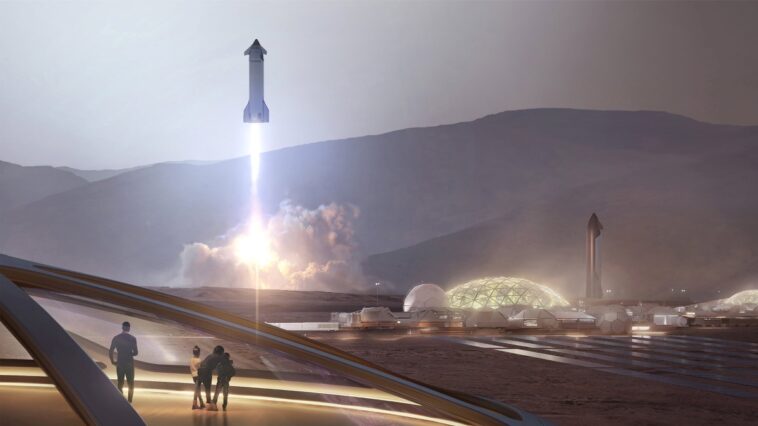Whether you think he’s a genius or just really good at generating headlines, Elon Musk has an undeniable talent for turning sci-fi concepts into actual businesses. Some of his ideas have genuinely transformed industries—others are still trying to prove they’re more than expensive experiments. And a few? Well, they’re still stuck somewhere between ambitious PowerPoint presentations and reality.
The following nine ideas—ranging from proven game-changers to ambitious works-in-progress—show both the promise and the peril of Musk’s approach. Some have already reshaped entire industries. Others are struggling to live up to their own hype. A few might never work at all. But taken together, they represent one of the more interesting experiments in turning venture capital and relentless PR into actual technological progress, even if the results don’t always match the marketing materials.
Settlement on Mars

Company: SpaceX
This represents Musk’s most ambitious long-term vision: a self-sustaining colony on Mars. Not just visiting the Red Planet—living there. At the heart of this vision lies Starship, a massive reusable rocket designed to ferry up to 100 people into deep space on each mission.
In April 2024, Musk told SpaceX employees he expects one million people to be living on Mars in the next 20 years. It sounds like science fiction, but experts remain skeptical of this timeline, even as every successful test flight and booster recovery makes the underlying technology feel a little more like a blueprint.
Full Self-Driving Vehicles

Company: Tesla
Musk isn’t interested in just electric vehicles—he wants them to drive themselves. Tesla’s Full Self-Driving (FSD) software is continually revised, with billions of real-world miles feeding its neural network. While its name is ambitious, FSD is currently an advanced driver-assistance system requiring the driver to remain fully alert and ready to intervene.
Musk’s endgame is a long-promised fleet of truly autonomous cars that can earn income for their owners, acting like robotaxis—though Musk has been making similar promises since 2019 with repeatedly missed deadlines. The implications would be profound: a radical reduction in accidents, less traffic, and a completely new definition of car ownership.
Tesla’s recent launch of a limited robotaxi pilot in Austin represents progress toward this vision, but full autonomy remains an ambitious goal rather than an imminent reality.
Optimus: The Humanoid Robot

Company: Tesla
Yes, Musk is building a robot. Not just any robot—one that’s five feet eight, and weighs about 125 pounds, and is designed to do “boring, repetitive, and dangerous” tasks. Tesla Optimus is still in early development, but its potential is massive, encompassing tasks such as warehouse work, home assistance, and elder care. Musk envisions a world where physical labor is optional and robots handle the drudgery.
Tesla plans to deploy over 1,000 units in its own factories this year, with total production targeting 10,000 or more, featuring bots capable of carrying 45 pounds at 5 mph—although 2024 demos were partially human-controlled, sparking controversy. Sci-fi warning bells? Loud. But again, this is the guy who made electric cars cool.
Hyperloop Travel
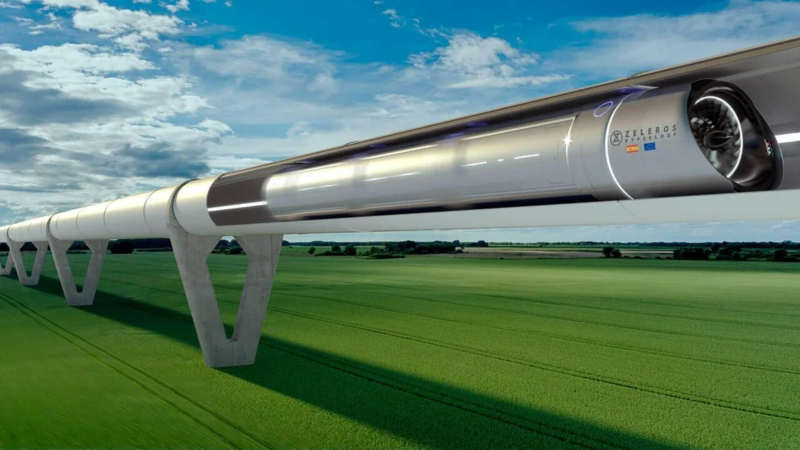
Imagine getting from New York to Washington, D.C. in 30 minutes. That’s the promise of the Hyperloop: passenger pods inside low-pressure vacuum tubes traveling at airline speeds with zero turbulence. However, this would require sustained speeds of around 471 mph, which remains theoretical.
Musk first proposed the idea in a 2013 white paper and then left it open-source for others to build upon. Several independent companies have since tested variants, though most development efforts have stalled or ceased operations. Among the companies remaining an active player is Hyperloop Transportation Technologies, which is still operational and moved its headquarters to Venice in 2024.
Musk’s own The Boring Company is focused on a related challenge: creating the low-cost tunnels that a Hyperloop would need. For now, the complete vision still outpaces the reality.
A Brain-Computer Interface
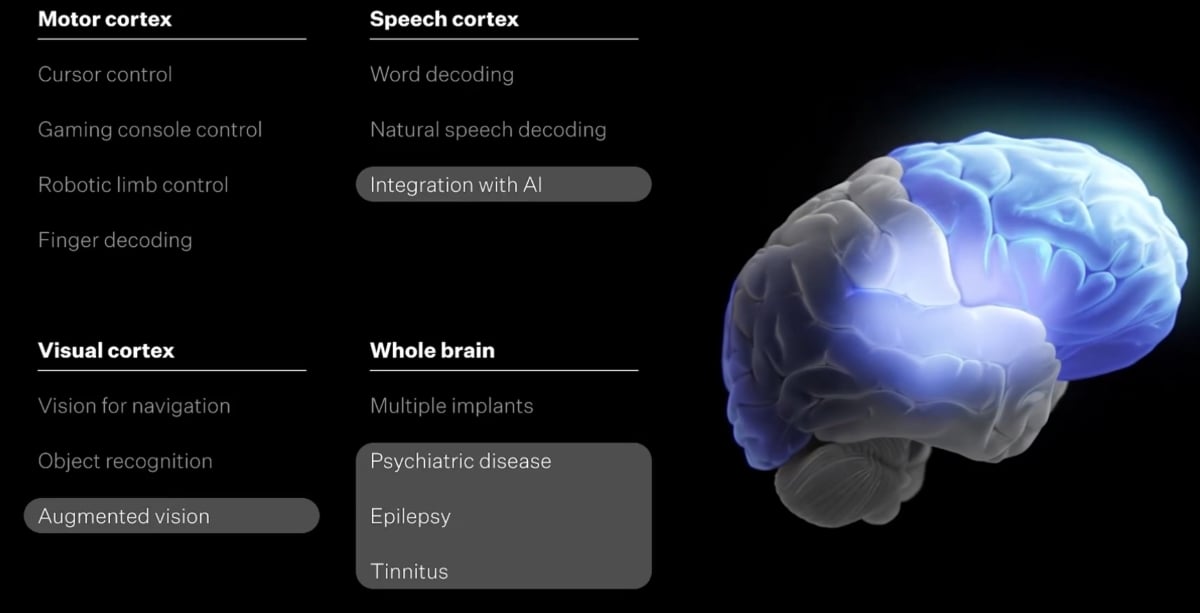
Company: Neuralink
Musk’s take on the future of human evolution? Merge with machines. Neuralink is developing a chip that would be implanted inside the skull and communicate directly with the brain. This highly invasive surgical approach has drawn criticism due to the existence of less invasive alternatives.
Initial use cases include helping people with paralysis control devices. While the first human patient can now control a computer with his thoughts, he has also “run into some issues,” and the company reported that some of the implant’s threads had retracted from his brain, a problem the company later said it compensated for with software adjustments. The project is also controversial, having faced scrutiny over reports of rushed and fatal animal testing.
Neuralink’s broader goal is to eventually create a high-bandwidth interface between humans and AI. Sound intense? It is. Musk argues that this is necessary to prevent humanity from being outpaced by artificial intelligence, but critics suggest that this focus on a distant sci-fi goal has driven unnecessarily risky procedures, prioritizing maximum bandwidth over patient safety.
Global Internet from Space
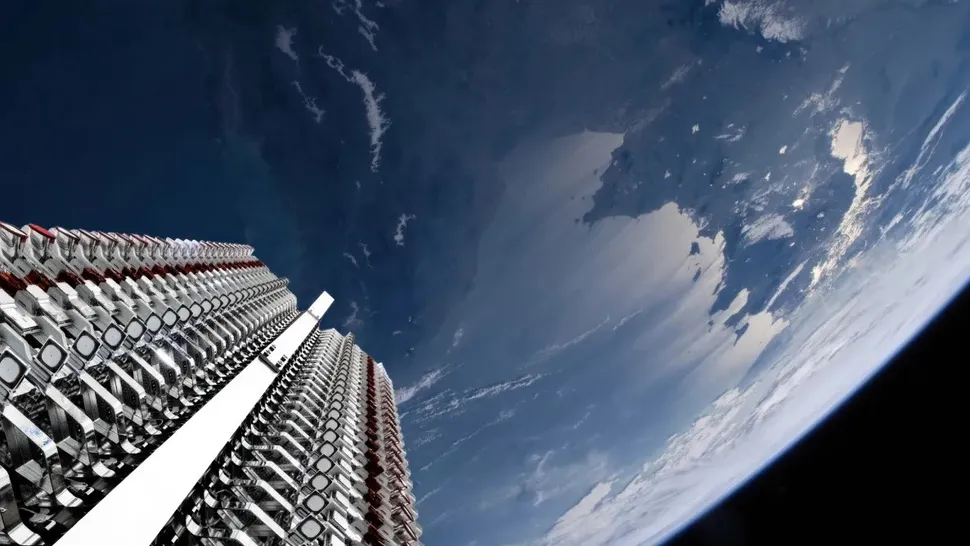
Company: Starlink (under SpaceX)
High-speed internet, anywhere on Earth. That’s what Starlink promises—and is already delivering to over 6 million subscribers across more than 110 countries, including rural or underserved regions. However, coverage is not yet literally everywhere. It requires a clear view of the sky, is still pending regulatory approval in several countries, and can be less reliable in extremely dense urban areas compared to fiber.
With over 7875 small satellites in low-Earth orbit and more launching every month, Starlink is reshaping global connectivity, creating new possibilities for education, communication, and business in places that were once completely offline.
Reusable Rockets
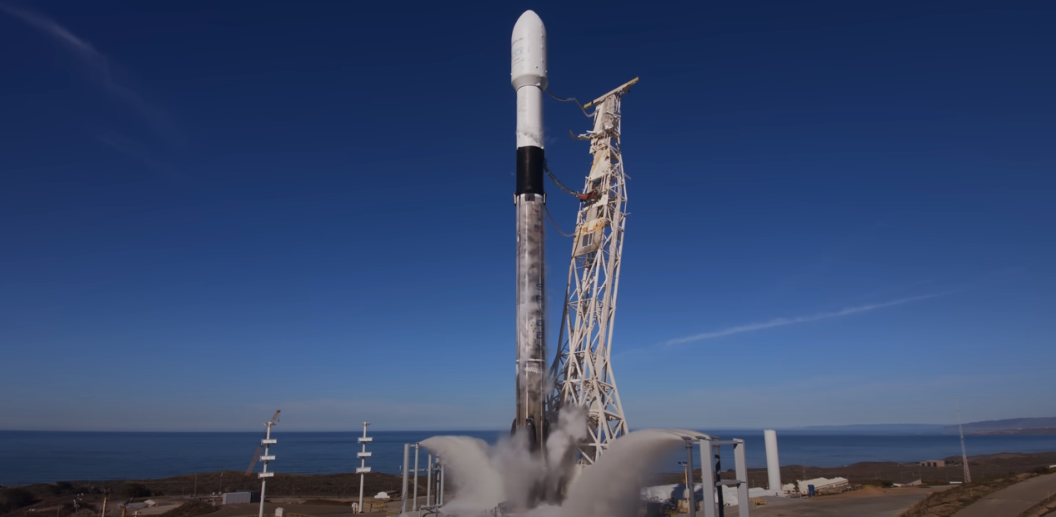
Company: SpaceX
Space travel had always been astronomically expensive because rockets were essentially one-time-use vehicles. While NASA’s Space Shuttle proved reusability was technically possible, its complex refurbishment requirements made it even more costly than expendable rockets.
SpaceX changed everything with the Falcon 9, the first orbital-class rocket booster that could land vertically and be reused economically. Unlike the Space Shuttle, which was a reusable spacecraft that required extensive refurbishment, the Falcon 9’s first stage is designed as a traditional rocket booster that lands propulsively and can be quickly prepared for another flight.
This breakthrough has slashed launch costs from around $10,000 per kilogram to about $2,500 per kilogram to orbit, making regular spaceflight financially viable for governments, companies, and eventually everyone else. It’s not just spectacular to watch—it’s the foundation for making space accessible without bankrupting entire nations.
Tesla Energy & Grid Storage

Company: Tesla
While most of the world knows Tesla for its cars, Musk has quietly turned it into a growing energy company as well. Products like the Powerwall (for homes) and the Megapack (for utilities) store solar energy for use at night or during outages. Using these utility-scale Powerpacks, entire regions—such as South Australia—have stabilized their power grids. It’s a step toward a world that’s powered by renewables, not fossil fuels.
Tackling Traffic with Underground Tunnels
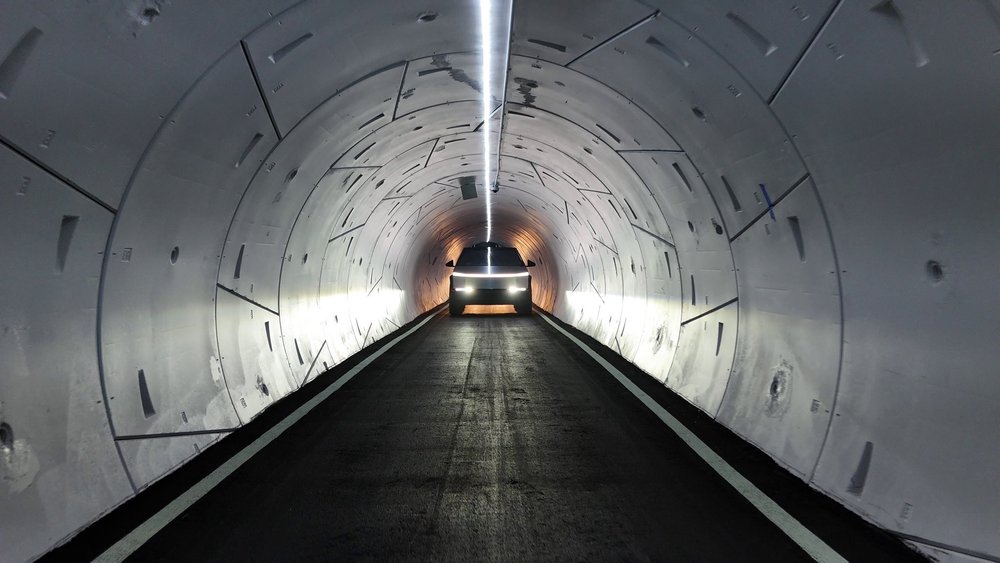
Company: The Boring Company
Frustrated by traffic, Elon Musk’s solution is to go underground. The Boring Company is building transport tunnels, aiming to create efficient, low-congestion travel options. A first-of-its-kind system is operational in Las Vegas, with the Las Vegas Convention Center Loop serving as the initial implementation and proof of concept for the broader Vegas Loop network.
However, it currently operates with human-driven Teslas at around 40 mph, highlighting the significant technological and logistical hurdles that remain to achieve the 150 mph autonomous vision. While praised for its innovation, this gap has led transit experts to debate whether the low-capacity model can truly reshape urban travel on a mass scale. Despite these challenges, the project represents a bold experiment in reimagining urban transportation infrastructure.

